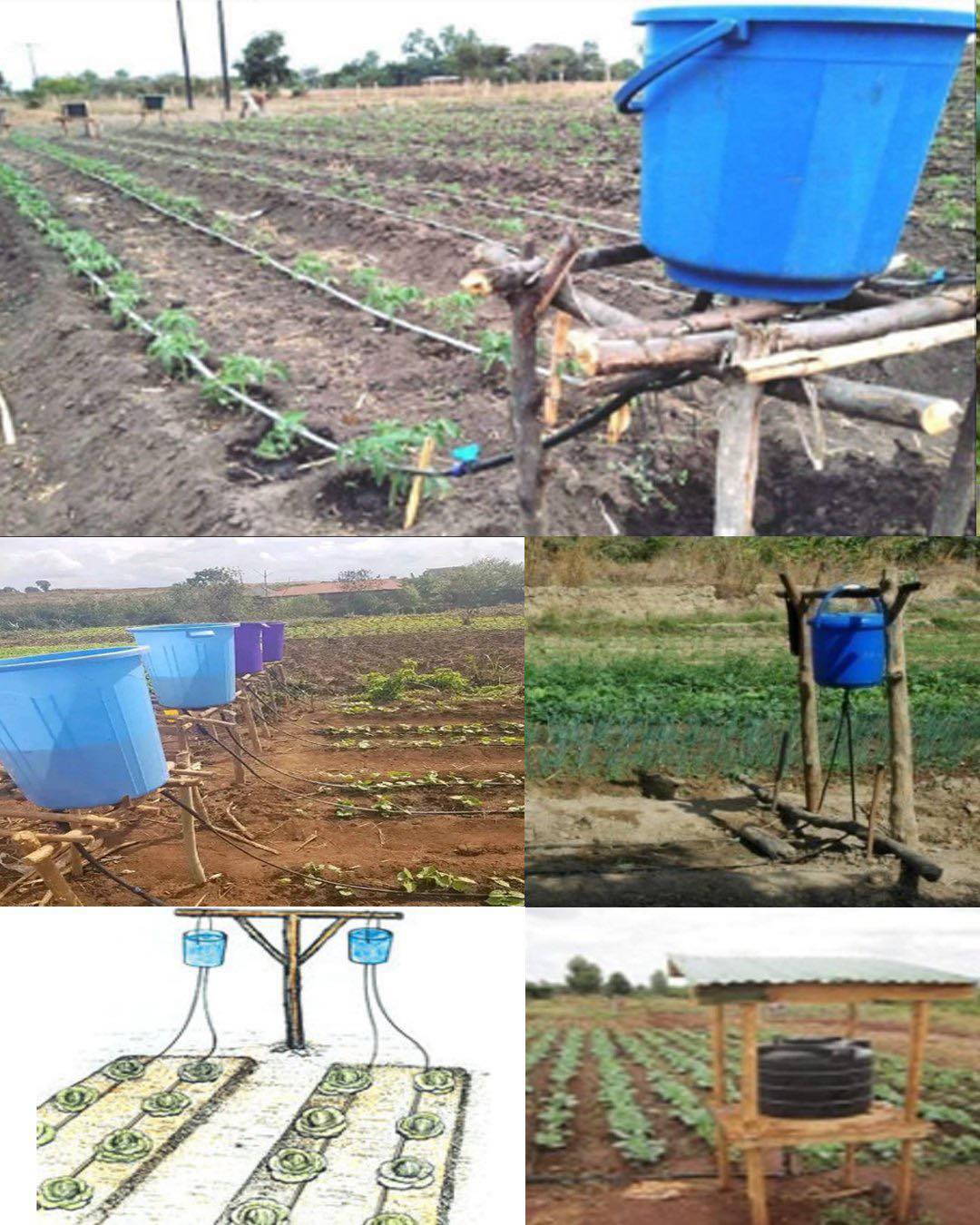In the realm of agriculture, where water scarcity and resource management are constant challenges, innovative solutions are imperative. One such solution gaining momentum is bucket irrigation – a simple yet effective technique that holds the promise of transforming agricultural practices, especially in resource-constrained regions. This article explores the concept of bucket irrigation, its benefits, and how anyone can employ this inexpensive method to enhance crop yields and ensure food security.

Understanding Bucket Irrigation
Bucket irrigation is a method of providing water directly to plants at their root zones using buckets or containers. Unlike traditional irrigation systems that rely on complex networks of pipes and pumps, bucket irrigation is straightforward and requires minimal investment. Farmers fill buckets with water from available sources such as wells, rivers, or rainwater harvesting systems and place them strategically near plants. Through capillary action or gravity, water slowly seeps out of holes or drip emitters attached to the bottom of the buckets, delivering a steady supply of moisture to the soil.
Benefits of Bucket Irrigation
Cost-Effectiveness: One of the most significant advantages of bucket irrigation is its affordability. Farmers can construct or repurpose buckets and containers at minimal cost, eliminating the need for expensive infrastructure or equipment.
Water Efficiency: Bucket irrigation promotes water conservation by delivering water directly to the root zone, minimizing evaporation and runoff. This targeted approach ensures that plants receive adequate moisture while reducing water wastage.
Accessibility: Unlike conventional irrigation systems that require specialized knowledge and maintenance, bucket irrigation is accessible to farmers of all skill levels. Its simplicity makes it suitable for smallholder farmers and those with limited resources or technical expertise.
Customization: Bucket irrigation allows farmers to tailor water delivery to the specific needs of different crops. By adjusting the number of buckets, placement locations, and watering schedules, farmers can optimize irrigation practices for maximum yield and plant health.
Adaptability: Bucket irrigation is versatile and adaptable to various agricultural settings, including remote or off-grid areas where access to electricity or advanced irrigation technologies may be limited.
How to Implement Bucket Irrigation
Select Suitable Containers: Choose durable buckets or containers with lids to minimize water loss through evaporation and contamination.
Drill Holes or Install Drip Emitters: Create small holes in the bottom of each bucket or attach drip emitters to regulate water flow. Ensure that the holes are evenly spaced and sized to prevent clogging.
Place Near Plants: Position the buckets close to the base of plants, ensuring even coverage and efficient water distribution.
Monitor and Adjust: Regularly monitor soil moisture levels and plant health to determine the effectiveness of bucket irrigation. Adjust the number of buckets, watering frequency, and placement as needed based on environmental conditions and crop requirements.
Bucket irrigation represents a low-cost, accessible solution to the challenges of water scarcity and agricultural sustainability. By harnessing simple principles of water management, farmers can optimize resource utilization, increase crop yields, and improve livelihoods. As global agriculture faces mounting pressures from climate change and population growth, initiatives like bucket irrigation offer practical and scalable solutions for building resilient food systems and ensuring food security for generations to come. Whether on small family farms or large agricultural estates, the humble bucket holds the potential to transform the way we cultivate the land and nourish our communities.
News
JJ Redick reacts to Luka Doncic trade for Anthony Davis
In one of the most jaw-dropping moves of the season, the NBA landscape was rocked by the blockbuster trade involving Luka Dončić and Anthony Davis—a swap that has sent ripples of excitement, disbelief, and heated discussion through the league. Among…
Anthony Davis FULL reaction to trade to Mavericks for Luka Doncic
In a blockbuster move that sent shockwaves through the NBA and left fans reeling, Anthony Davis has been traded to the Dallas Mavericks in exchange for Luka Dončić. In the immediate aftermath of the news, Davis took to the media…
Shaq reacts to Dallas Mavericks wanting Kevin Durant after Luka-AD trade 👀
In the constantly shifting world of the NBA, trade rumors and blockbuster moves are a regular part of the season’s drama. The latest twist has fans buzzing: the Dallas Mavericks have reportedly set their sights on acquiring Kevin Durant in…
Donovan Mitchell FILTHY poster dunk on Kristaps Porzingis 😳
In a game filled with high-intensity moments and jaw-dropping highlights, one play in particular has left fans and analysts buzzing about Donovan Mitchell’s latest display of athleticism. Early in the contest, with the atmosphere already charged by an evenly matched…
Joel Embiid hits go-ahead bucket vs Mavs then chats with Anthony Davis after game
In one of the most thrilling contests of the season, Joel Embiid delivered a clutch performance against the Dallas Mavericks, punctuating the game with a go-ahead bucket that sent the home crowd into a frenzy. The atmosphere in the arena…
D’Angelo Russell game winner as Nets hit two 3’s in 3 seconds to win vs Rockets 😱
In one of the most electrifying moments in recent NBA history, D’Angelo Russell delivered an unforgettable game-winner that left fans and commentators in complete awe. With the Brooklyn Nets locked in a tense battle against the Houston Rockets, the outcome…
End of content
No more pages to load











